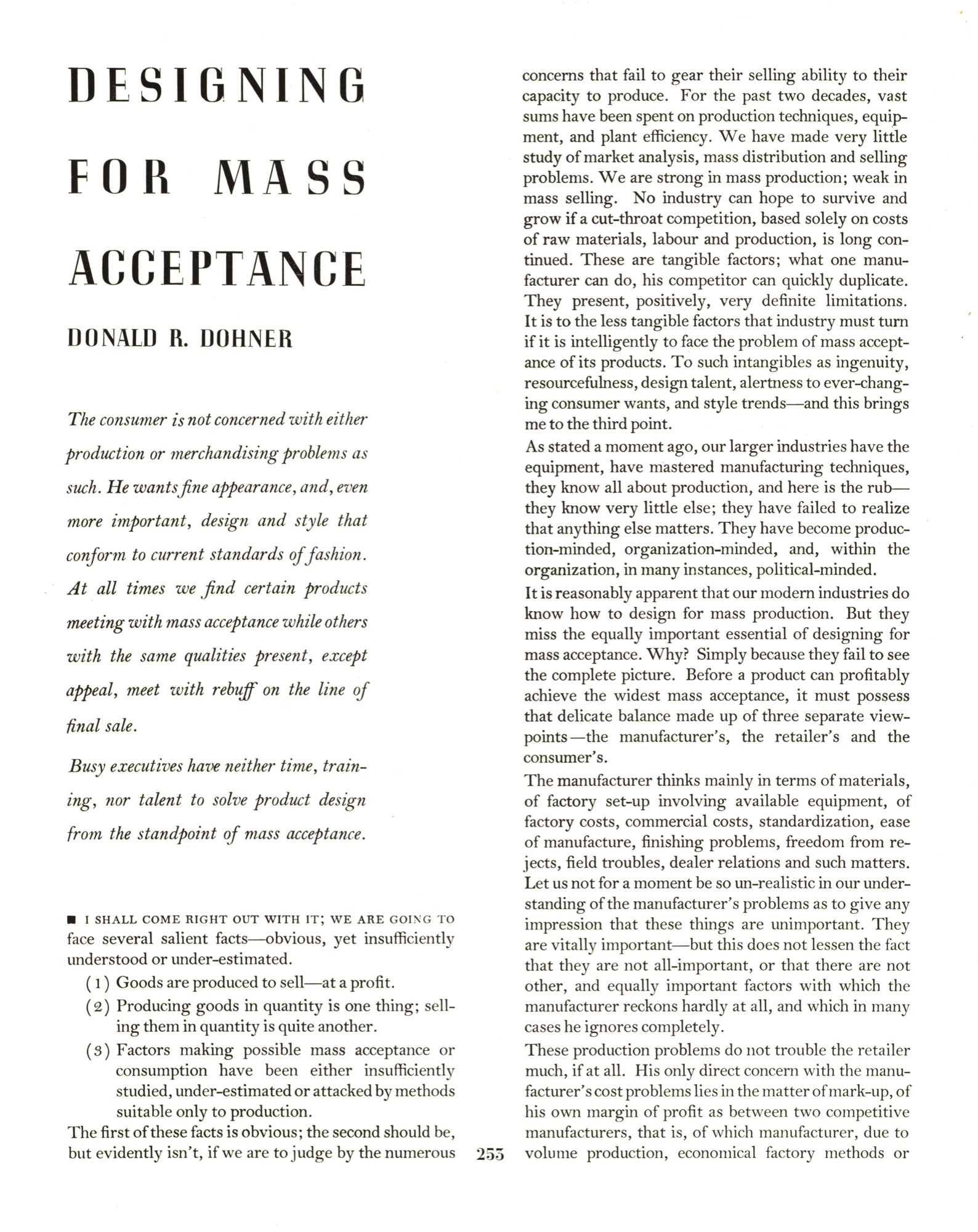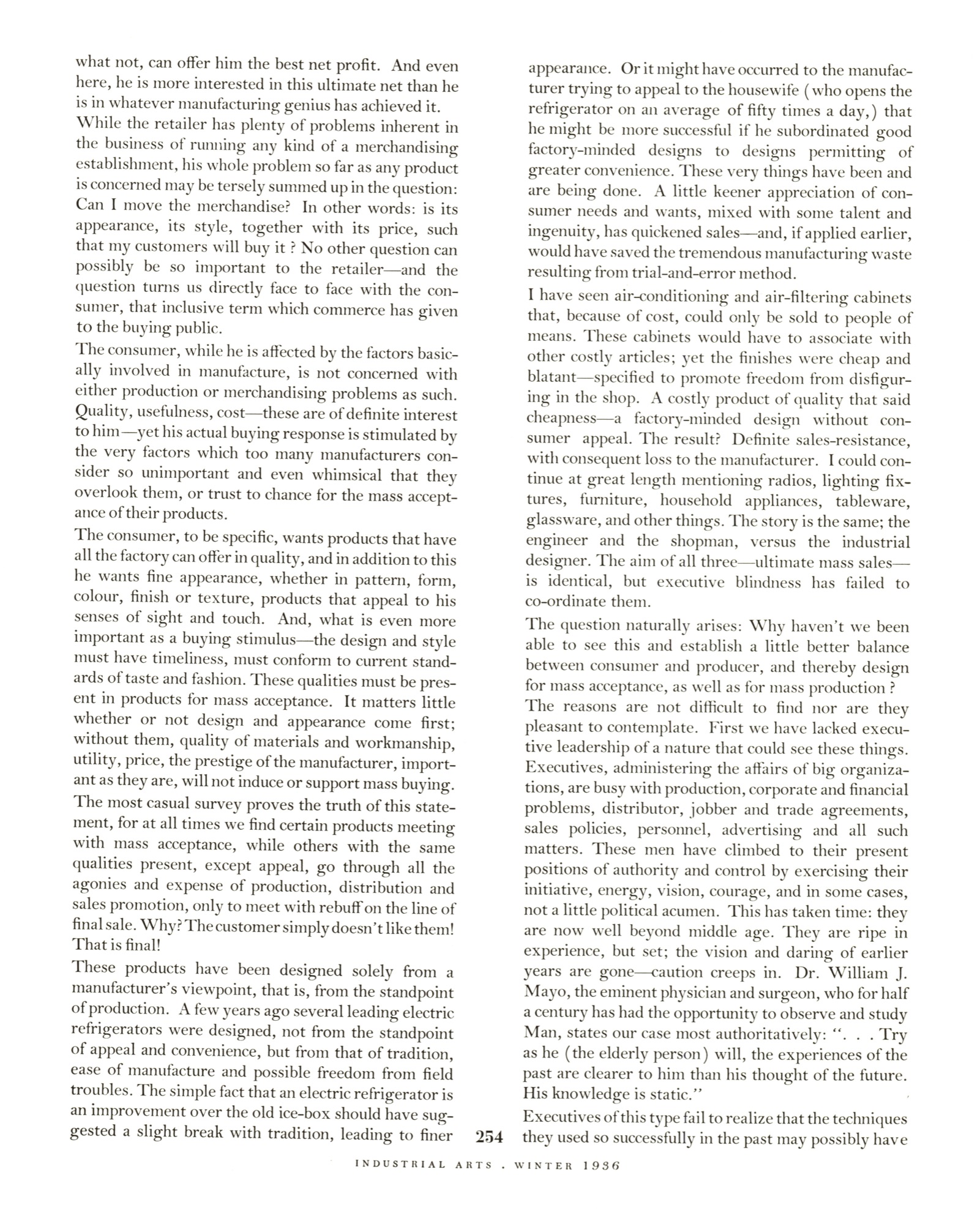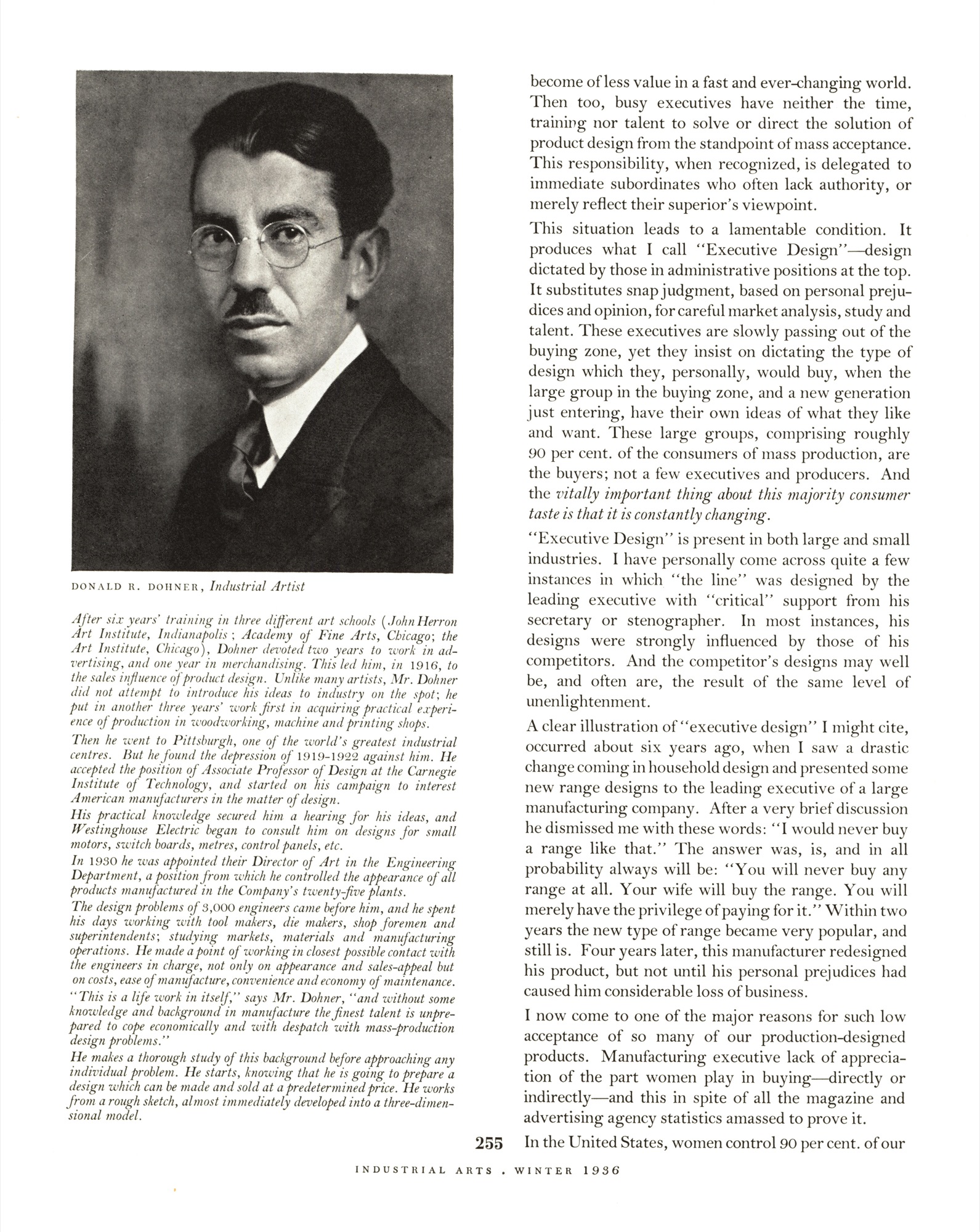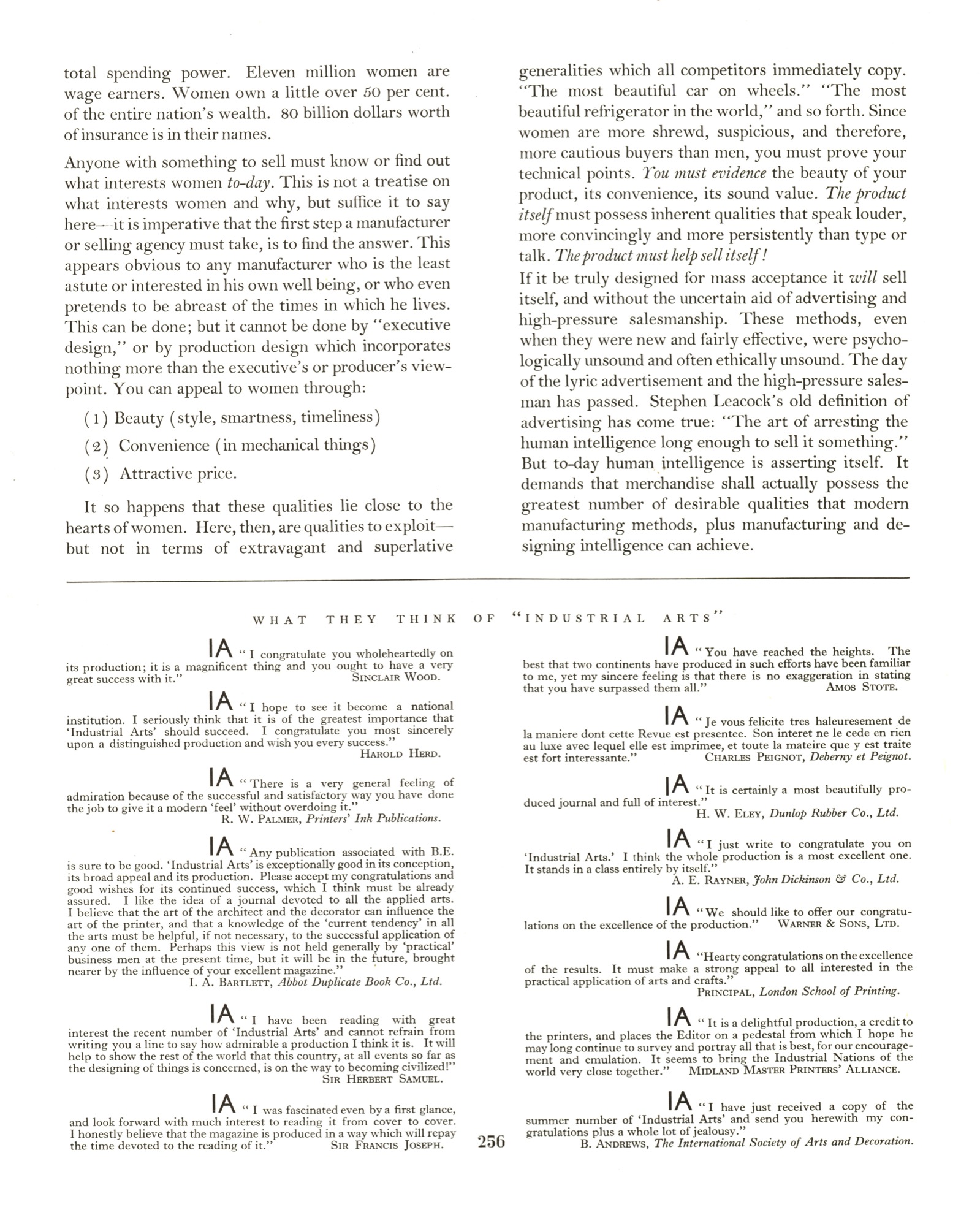4 of
You are browsing the full text of the article: Designing for Mass Acceptance
Click here to go back to the list of articles for
Issue:
Volume: 1 of Industrial Arts
| Industrial Arts Volume 1 Issue: 4 Winter 1936 Page: 253 | |||||||||||||||||||||||||||||||||
| Designing for Mass Acceptance By Donald R. Dohner | |||||||||||||||||||||||||||||||||
|

|
|
|||||||||||||||||||||||||||||||
| Industrial Arts Volume 1 Issue: 4 Winter 1936 Page: 254 | ||||||||||||||||||||||||||
| Designing for Mass Acceptance By Donald R. Dohner | ||||||||||||||||||||||||||
|

|
|
||||||||||||||||||||||||
| Industrial Arts Volume 1 Issue: 4 Winter 1936 Page: 255 | ||||||||||||||||||||||||||||||||
| Designing for Mass Acceptance By Donald R. Dohner | ||||||||||||||||||||||||||||||||
|

|
|
||||||||||||||||||||||||||||||
| Industrial Arts Volume 1 Issue: 4 Winter 1936 Page: 256 | ||||||||||||||||||||||||||
| Designing for Mass Acceptance By Donald R. Dohner | ||||||||||||||||||||||||||
|

|
|
||||||||||||||||||||||||



